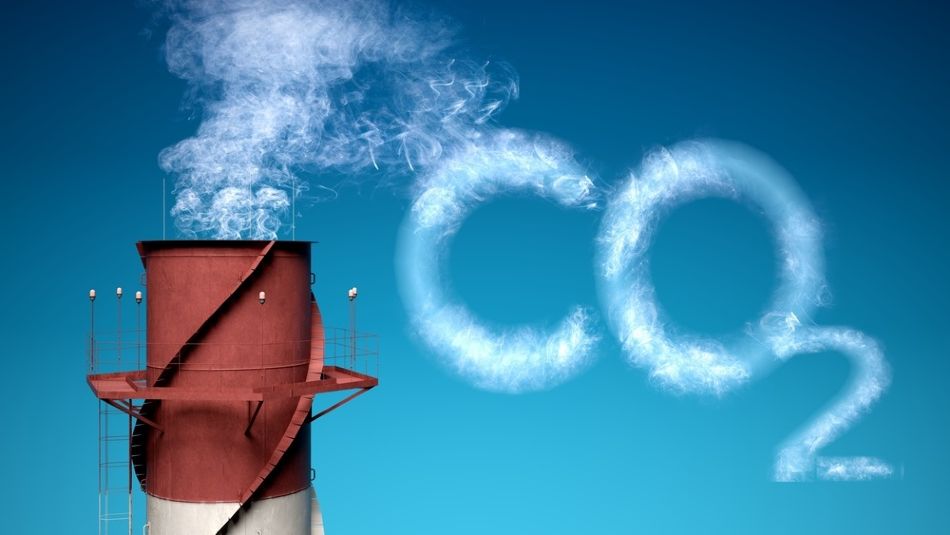Dec 12 2019

Image Credit: Billion Photos/ Shutterstock.com
An international team of researchers co-led by a chemistry researcher from Oregon State University has discovered an improved method to clean up carbon dioxide from smokestack emissions, which could be vital for tackling global climate change.
The outcomes of the study have been recently published in Nature and are crucial because atmospheric CO2 has increased 40% from the start of the industrial age, contributing significantly to the warming planet.
Kyriakos Stylianou from the OSU College of Science and his colleagues from École Polytechnique fédérale de Lausanne, Heriot-Watt University in Scotland, the University of Ottawa, and the University of Granada in Spain employed data mining as a stepping stone for taking up a key challenge: handling the water section of smokestack gases that considerably complicates CO2 elimination.
For the data mining hundreds of thousands of nanomaterials called metal organic frameworks, or MOFs in general, were used. These MOFs have the ability to block CO2 molecules through adsorption when flue gases make their way out of the smokestack.
Although flue gases can be dried, that incurs a considerable cost for the CO2 capture process.
There are a countless number of structurally and chemically distinct MOFs, but the challenge with most of them is that they do not perform well when subjected to testing with realistic flue gases. The water in flue gases competes with the CO2 for the same adsorption sites, which means those MOFs are not scrubbing selectively like we want them to.
Kyriakos Stylianou, Chemistry Researcher, Oregon State University
Scientists discovered different types of CO2 binding sites by scoring through over 325,000 MOFs in a digital library. Moreover, they named these sites as “adsorbaphores,” which would retain their selectivity in the presence of water.
Furthermore, in the lab, Stylianou’s doctoral student, Arunraj Chidambaram, created two MOFs that included a hydrophobic — water-repelling — adsorbaphore with two aromatic cores and tested them. The researchers identified that not only the separation performance of the MOFs was unaffected by water, the MOFs also outclassed some of the CO2 removal materials already existing in the market, like zeolite 13X and activated carbon.
We went from design to synthesis and application. We used computations to discover active sites for CO2 capture. The MOFs performed optimally for wet flue CO2 capture because these MOFs have two distinct sites in their structures; one for water and one for CO2, and therefore, CO2 and water molecules do not compete with each other.
Kyriakos Stylianou, Chemistry Researcher, Oregon State University
Stylianou added that future studies will seek to achieve scaling: How to create and test the MOFs on the type of range needed by the large-magnitude challenges presented by industrial CO2 emissions.
As reported by the National Atmospheric and Oceanic Administration, in 2018, the global average atmospheric carbon dioxide concentration was 407.4 ppm, quite higher than at any time in the last 800,000 years.
Fossil fuels such as oil and coal include carbon removed by plants out of the atmosphere through photosynthesis over millions of years. As a matter of fact, that same carbon is currently being reverted to the atmosphere in hundreds of years since fossil fuels are being burned for energy, by factories and other large-scale industrial facilities.
The yearly increase in atmospheric CO2 over the past 60 years is approximately 100 times faster than the increases leading to natural causes, like those that occurred after the last ice age over 10,000 years ago, as per NOAA.
Unlike nitrogen or oxygen, which are more prevalent in the atmosphere, the greenhouse gases absorb heat and release it slowly. In the absence of greenhouse gases, the planet’s average yearly temperature would be below the freezing point and not 60 °F. However, extremely high levels of greenhouse gases result in an imbalance in Earth’s energy budget.
This study was supported by the U.S. Department of Energy, the UK Department for Business, Energy & Industrial Strategy, Switzerland's Federal Office of Energy, the Swiss National Science Foundation, the European Research Council, Switzerland's National Center of Competence in Research, the European Union, and the Center for Gas Separations Relevant to Clean Energy.